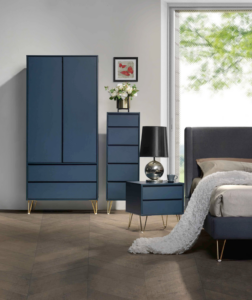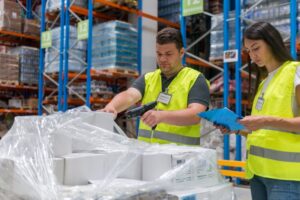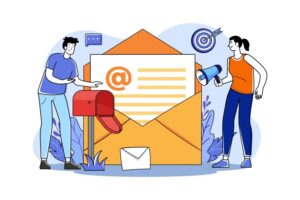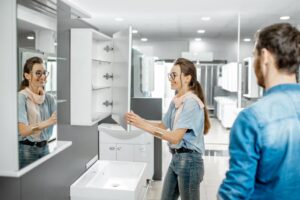Also called a solutions stack, technology infrastructure, or the data ecosystem, your tech stack refers to all the technology services your business uses to function optimally. Every tech stack has two sides. There’s a back end, also known as server-side, and a front end, also known as client-side. The back end of your tech stack will include components related to project, database, and business management, as well as to web development and online user experience. The front end is what your customers see when they shop with you. This will include in-house and third-party tools for inventory, ecommerce, customer service, client management, marketing, advertising, and more.
There’s a lot at stake. Your customers want you to meet them where they are and accompany them with personalized service on every channel and at every stage of their shopping journey. It’s your tech stack’s job to make it happen. Choosing the right tech stack will help your business grow. Choosing the wrong tools or none at all puts your business at a disadvantage. Online consumers are 3.5X more likely to purchase more from a brand after a positive customer experience. You can’t afford for customers to close their browser windows or abandon their carts because the process is cumbersome or impersonal. 67% of consumers say that their CX demands are higher than ever and 86% are ready to leave a brand after as few as two poor experiences.
Is Your Tech Stack Where It Needs to Be?
Tech stack components for your retail business are virtually limitless and choosing the best options can seem overwhelming. The experts at HubSpot recommend a tech stack audit to reduce bloat and look for ways to optimize processes and build revenue. This process will:
- Save employee time and company money
- Consolidate apps
- Discover a signal source of truth
Begin by gathering information from all stakeholders then review each app to determine its effectiveness and value. Eliminate products that aren’t being used and research alternatives to those that are failing to produce a return on your investment. After your audit is complete, you’ll be ready to seek new tech stack components that offer revolutionary approaches and make your business stand out from the competition.
What Does the Best Tech Stack for Retail Look Like?
“The ideal tech stack for today’s retailer should be designed to allow easy integration of data across functions and processes. This reduces friction and most importantly provides each function the opportunity to gain and act on new insights more fluidly. Data sources will grow and reporting tools will evolve, so designing your tech stack to be extensible with easy integrations is critical to staying nimble.” – Laura Khoury, Shoptelligence CEO
The best tech stacks for any business are simple, stable, up-to-date, and redundancy-free. Your tech stack should be able to grow with your business and components should be easy to replace as better options become available to minimize expenses while maximizing productivity. If you’re like most retailers, you won’t understand every “under the hood” aspect of the products you choose. That’s ok – you don’t need to. Learn as much as you can about options that will differentiate your business’s online presence through exceptional customer experience, then collaborate with the best people you can find.
Best Tech Stack Practices
In order to get the most out of your tech stack, keep a few best practices in mind:
- Prioritize user needs. That starts by understanding who will be using any given stack. Know your customers when building your eComm tech stack. Choose technology that will delight them, inspiring them to fill their carts and complete their purchases.
- Opt for “breadth over depth.” Try to keep your tech stack simple by minimizing layers. The deeper your stack gets, the more likely it is that something can – and usually will! – go wrong.
- Consider integration and compatibility when calculating cost and ROI. Will the new product you’re exploring work with what you already have in place, or will this purchase create a need for additional investments? Does your in-store tech stack seamlessly integrate with your online tech stack, creating the seamless omnichannel experience customers demand?
Common Tech Stack Mistakes
Using the wrong tools, paying for overlapping technologies rather than finding the one best option for each purpose, and sticking with familiar products for longer than they are useful are all common tech stack mistakes. While there is no single tech stack that is right for every business, it’s essential to frequently explore options and make careful choices that will provide the best, most personalized end user experience. Remember that, even as you seek products to improve experience for your customers, your business is someone’s customer, too. Engage only with companies that are known to provide the same excellent experience and support that you do.
How Shoptelligence Can Boost Your Existing Tech Stack
Shoptelligence is cutting-edge, AI-powered technology that includes an all-in-one customer data platform (CDP), customer relationship management (CRM) platform, email service provider (ESP), and other solutions that enhance customer experience by providing personalized recommendations across categories from your existing inventory. The software quickly and seamlessly integrates with your existing tech stack, ensuring that your business doesn’t just meet customer expectations; it exceeds them. Shoptelligence has been proven to boost revenue, increase average order value, and build customer loyalty by providing shoppers with the individual omnichannel experience they crave.
What kinds of results have retailers like you have achieved after adding our unique merchandising solution to their tech stacks?
- 6X increase in engagement
- 35% increase in AOV
- 150% increase in conversion rate
- 2X+ increase in average revenue per visitor
You can see results like this, too. Improve customer experience and watch profits rise when you add Shoptelligence to your tech stack. Schedule a demo today.






